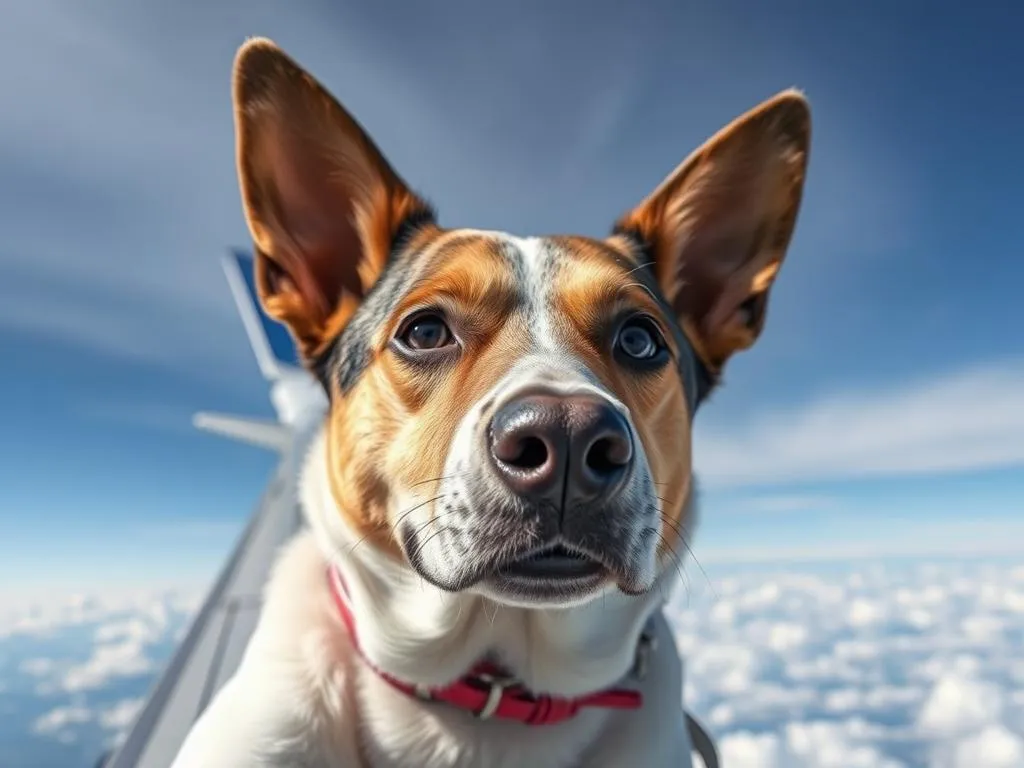
Traveling with your furry friend can be an exciting adventure, but it also comes with its own set of challenges, particularly concerning their health and comfort. One common concern among pet owners is related to ear discomfort during flights—specifically, do dogs’ ears pop on planes? Understanding the anatomy of your dog’s ears, how they react to pressure changes, and what you can do to prepare for air travel can make a significant difference in ensuring a comfortable journey for your pet.
Understanding Canine Anatomy
Overview of Dog Ear Structure
Dogs have a unique ear structure that comprises three main parts: the outer ear, the middle ear, and the inner ear. The outer ear consists of the visible part, known as the pinna, which helps to funnel sound waves into the ear canal. The middle ear contains the eardrum and the ossicles (small bones that transmit sound vibrations), while the inner ear is responsible for balance and sound perception.
How Dogs’ Ears Differ from Humans’ Ears
The shape and length of a dog’s ear canal differ significantly from that of humans. A dog’s ear canal is L-shaped, which means sound waves must travel a longer distance to reach the eardrum. This unique structure can influence how they perceive sound and respond to pressure changes. When flying, the rapid changes in cabin pressure during take-off and landing can affect dogs differently than humans, raising the question: do dogs’ ears pop on planes?
The Science of Ear Pressure Changes
What Happens During Air Travel?
During a flight, cabin pressure fluctuates as the airplane ascends and descends. As the altitude changes, the air pressure inside the cabin decreases, leading to a difference in pressure between the inner ear and the external environment. This pressure imbalance can cause discomfort in both humans and dogs.
Do Dogs Experience Ear Pressure Changes?
While dogs may not “pop” their ears in the same way humans do, they can still experience discomfort due to pressure changes. Dogs may not be able to equalize their ear pressure as effectively as humans, especially if they are anxious or not used to flying. Signs that your dog might be experiencing discomfort include vocalization, restlessness, or behavior changes.
Signs of Ear Discomfort in Dogs
Common Symptoms to Look For
It’s essential to be aware of how your dog is feeling during a flight. Common symptoms of ear discomfort in dogs include:
- Whining, barking, or vocalization: If your dog is making more noise than usual, it may indicate discomfort.
- Head shaking or tilting: Dogs may shake their heads or tilt them to relieve pressure.
- Pawing at ears or excessive licking: This behavior can signify irritation or discomfort in the ears.
When to Seek Veterinary Advice
If your dog shows severe signs of discomfort, such as persistent whining, aggression, or signs of pain, it’s crucial to consult a veterinarian. Prior to travel, an examination can help ensure that your dog is healthy enough to fly and identify any potential issues that could be exacerbated by air travel.
Preparing Your Dog for Air Travel
Pre-Travel Health Check
Before embarking on a flight, a pre-travel health check is vital. Schedule an appointment with your veterinarian to ensure your dog is in good health. Discuss any concerns regarding your dog’s ear health and ask about recommended vaccinations and travel certifications.
Acclimating Your Dog to Travel
Getting your dog accustomed to the idea of travel can ease anxiety during the flight. Consider these tips:
- Positive reinforcement: Reward your dog for entering their carrier or behaving calmly during practice runs.
- Gradual exposure: Start with short car rides before progressing to longer journeys and eventually air travel.
Managing Ear Discomfort During Flights
Strategies to Minimize Ear Pressure Issues
Keeping your dog calm during the flight can help minimize potential ear discomfort. Here are some strategies:
- Calming aids: Consider using calming sprays or supplements to help relax your dog before and during the flight.
- Hydration and chewing: Offer water and chew toys or treats during the flight. Chewing can help equalize pressure in the ears, similar to how humans chew gum during take-off and landing.
Using Ear Protection
Certain products are available to help protect your dog’s ears during flights. Dog ear protection devices, such as specialized earplugs designed for pets, can mitigate discomfort caused by pressure changes. However, these should be discussed with a veterinarian to determine if they are appropriate for your dog.
Post-Flight Care for Your Dog
Signs of Ear Problems After Travel
After you land, monitor your dog for any unusual behavior or signs of discomfort. Symptoms may include:
- Increased vocalization
- Difficulty maintaining balance
- Reluctance to play or engage in usual activities
When to Visit the Vet Post-Travel
If your dog exhibits persistent symptoms of ear problems after travel, such as pain, discharge, or significant behavioral changes, it is crucial to visit your veterinarian. Early intervention can prevent more severe issues from developing.
Alternatives to Air Travel
Considerations for Road Trips
If flying seems too stressful for your dog, consider traveling by car. Here are some tips for a successful road trip:
- Frequent breaks: Stop every couple of hours to let your dog stretch, relieve themselves, and hydrate.
- Safety first: Use a secure harness or crate to keep your dog safe and prevent distractions while driving.
Other Travel Options
Other methods of travel, such as trains or ferries, may also be viable alternatives. Each option has its pros and cons regarding your dog’s comfort and health, so consider your pet’s behavior and preferences when planning your journey.
Conclusion
Understanding your dog’s ear health during air travel is crucial for a smooth and comfortable experience. While the question remains, do dogs’ ears pop on planes?, the answer lies in recognizing the differences in canine ear anatomy and preparing adequately for the changes in pressure. Always prioritize your pet’s well-being by consulting your veterinarian and taking proactive measures to ensure a safe and enjoyable trip.
FAQ Section
Do all dogs experience ear discomfort on planes?
Not all dogs experience ear discomfort, but many may feel some pressure changes. Individual responses can vary based on the dog’s health, anxiety levels, and prior exposure to flying.
Can I give my dog medication for anxiety during flights?
Yes, there are medications available for travel anxiety in dogs. Always consult your veterinarian before administering any medication to ensure it’s safe and appropriate for your pet.
What should I do if my dog shows signs of ear pain after a flight?
If your dog displays signs of ear pain after a flight, such as persistent whining, aggression, or difficulty maintaining balance, seek veterinary attention promptly. Early diagnosis and treatment can help alleviate any discomfort.









